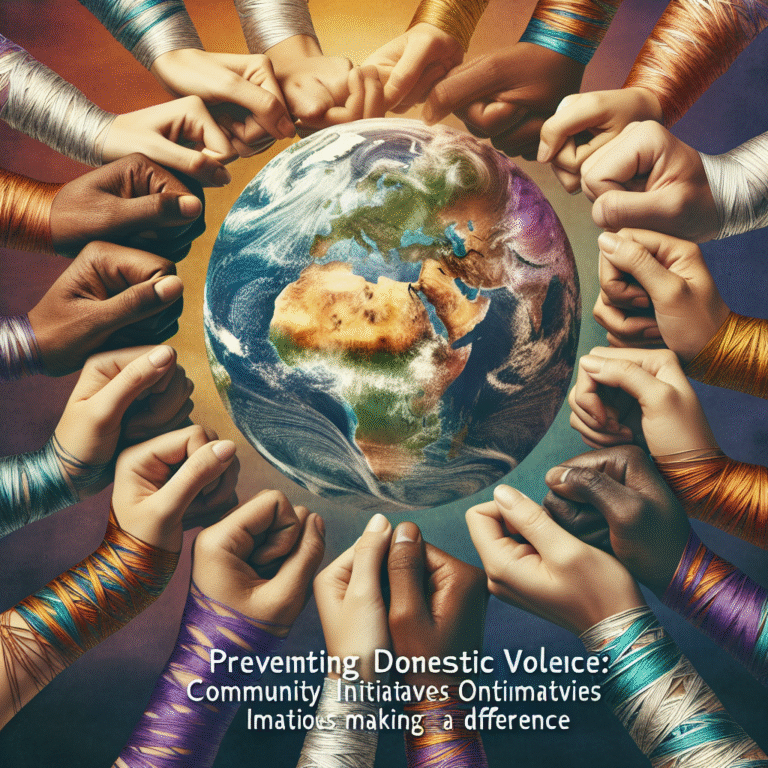
Introduction
In an increasingly digitized world, the internet has become an indispensable part of our daily lives. While it facilitates communication, learning, and entertainment, it also harbors threats that many remain unaware of. Among these threats, online predators pose a significant risk, particularly to minors and vulnerable individuals. In this article, we delve deep into Behind the Screens: Understanding the Mindset of Online Predators, exploring their strategies, motivations, and the psychological factors that enable their predatory behavior.
By gaining insights into the methods employed by these individuals, we can formulate better defenses to safeguard ourselves and our loved ones while nurturing a culture of awareness and vigilance.
The Online Predator Profile
Who Are Online Predators?
Before we can understand the mindset of online predators, we must first define who they are. Online predators are individuals who exploit the anonymity and vast reach of the internet to engage in sexual or predatory behavior against minors or vulnerable individuals. This category includes cyberbullies, groomers, and anyone who uses the digital space to manipulate others emotionally or sexually.
Psychological Traits of Online Predators
-
Lack of Empathy: Online predators often demonstrate a limited ability to empathize with their victims. This detachment enables them to exploit and manipulate individuals without remorse.
-
Narcissism: Many predators exhibit narcissistic traits, as their primary concern is self-gratification at the expense of others. They crave attention and may cultivate false personas online to attract victims.
- Deceptive Communication Skills: Predators are often skilled communicators. They can easily gain their victim’s trust through flattery, emotional manipulation, or by presenting themselves as understanding peers.
Case Study: The Case of "Megan Meier"
In 2006, a tragic event highlighted the dangers of online predators. Megan Meier, a 13-year-old girl, was cyberbullied through a fake MySpace account created by an adult neighbor. The emotional torment led to her suicide. This case exemplifies the mechanisms by which online predators can exploit technology to manipulate emotions and foster real harm.
Analysis
This case underscores the importance of monitoring online interactions and teaching young individuals about the risks associated with sharing personal information online.
The Path of Manipulation: Grooming Tactics
Understanding Grooming
Grooming is the process through which predators gradually build a relationship with victims, engaging in various manipulative tactics to achieve their goals. Typically, this can be broken down into several phases.
-
Targeting the Victim: Predators often look for vulnerabilities in a victim, such as low self-esteem or emotional struggles.
-
Building Trust: Initially, they may present themselves as supportive friends or mentors. By providing attention and validation, they create a protective environment.
-
Isolation: Predators may attempt to distance victims from friends and family, creating a reliance on them for emotional support.
- Exploiting the Relationship: Once trust is established, the predator may introduce sexual content or pressure the victim into engaging in inappropriate behavior.
Table: Common Grooming Techniques
| Grooming Technique | Description |
|---|---|
| Flattery | Compliments to build the child’s self-esteem |
| Sharing Secrets | Encouraging the child to keep information private |
| Emotional Manipulation | Exploiting the child’s feelings for control |
| Role Reversal | Positioning themselves as a “friend” rather than an adult |
Case Study: The 2017 Online Grooming Case
A notorious case involved an average teenager who became a target for grooming by someone he thought was a peer. The predator used social media to build rapport, ultimately convincing the teen to share sensitive material online. This led to dangerous blackmail and emotional repercussions for the victim.
Analysis
This case illustrates how predators can manipulate young individuals using socially interactive platforms. It emphasizes the critical need for open dialogue about the experiences children have online.
The Digital Arsenal: Tools of the Trade
How Predators Utilize Technology
Online predators employ a variety of platforms to facilitate their grooming and predatory behavior. Here are some of the tools often used:
-
Social Media: Platforms like Facebook, Instagram, and Snapchat can serve as hunting grounds for predators, allowing them to infiltrate children’s social circles.
-
Gaming Platforms: Online gaming environments often provide anonymity and enable predators to interact with children freely.
- Chat Rooms and Messaging Apps: These tools obscure users’ identities, creating a space where predators can exploit their victims without a trace.
Insights from Cyber Forensics
Cyber forensics offers insights into the methods and psychological patterns of online predators. By analyzing the digital footprints left behind, investigators can discern patterns linked to online behavior, leading to higher chances of identification and apprehension.
Table: Common Platforms Used by Predators
| Platform Type | Predatory Behavior |
|---|---|
| Social Media | Grooming and emotional manipulation |
| Online Gaming | Building false friendships |
| Chat Rooms | Engaging in inappropriate conversations |
Legal Ramifications: Holding Predators Accountable
Understanding the Law
The legal landscape surrounding internet crimes involving minors is complex and varies by jurisdiction. Strict laws and regulations are designed to protect victims and apprehend offenders.
-
Child Exploitation Laws: These laws are essential in guiding law enforcement actions against online predators.
-
Mandatory Reporting Laws: Mandate that certain professionals report suspected abuse, thereby creating a safety net for potential victims.
- Online Privacy Laws: Increasingly crucial in the age of digital communication, these laws address the broad spectrum of online harassment and abuse.
Case Study: The Fight Against Online Grooming Legislation
Countries around the globe are introducing and amending laws to combat concerns regarding online grooming. For instance, recent changes in the UK’s Sexual Offences Act have expanded definitions and penalties for online stalking and grooming.
Analysis
This shift illustrates a growing recognition of threats posed by online predators, highlighting the need for continual evolution in legal frameworks to ensure protection for vulnerable individuals.
Prevention: Empowering Vulnerable Individuals
Education and Awareness
The ultimate defense against online predators lies in comprehensive education. Increased awareness among minors, parents, and educators can create a proactive community that can help mitigate risks.
-
Parents and Guardians: Open conversations about online activity, ensuring that children feel comfortable discussing their digital experiences and any discomfort they may experience.
-
Schools: Integrating digital literacy programs into school curricula can equip students with the necessary tools to navigate the online world safely.
- Community Initiatives: Local workshops, seminars, and outreach programs can foster community-based knowledge, empowering families to take a stand against online predatory behavior.
Actionable Tips
-
Encourage Open Dialogue: Create an atmosphere where young individuals feel safe sharing their online experiences.
-
Monitor Online Activity: Utilize parental control software and maintain visibility of online interactions.
- Promote Critical Thinking: Teach children to question online exchanges and understand the potential risks associated with sharing personal information.
Conclusion
The landscape of online interaction is both vast and vulnerable. By armed with the insights shared in Behind the Screens: Understanding the Mindset of Online Predators, we can create a safer digital environment for ourselves and our children.
Awareness, education, and vigilance are our best defenses against this pervasive issue. Let’s empower ourselves and our communities to tackle the hidden threats lurking behind the screens through proactive measures, seamless communication, and collective responsibility.
FAQs
1. What are some signs that a child may be a target for an online predator?
Signs can include sudden changes in behavior, secretive online interactions, or withdrawal from family activities.
2. How can parents monitor their children’s online activity without invading privacy?
Open conversations rather than surveillance create trust. Encourage transparency about online websites and interactions.
3. Are there legal protections for victims of online predators?
Yes, various laws provide avenues for criminal prosecution and protective measures for victims.
4. How can schools help prevent online predation?
By incorporating digital literacy classes, schools can educate students on safe online practices and recognizing threats.
5. What resources are available for victims of online predation?
Organizations such as the National Center for Missing and Exploited Children provide support and guidance for victims and their families.
By fostering a culture of awareness and collaboration, we can drive meaningful change in our online communities, ensuring the safety and well-being of every individual.


















